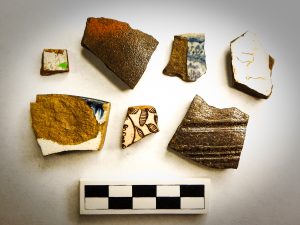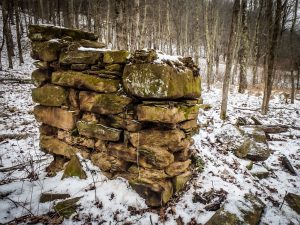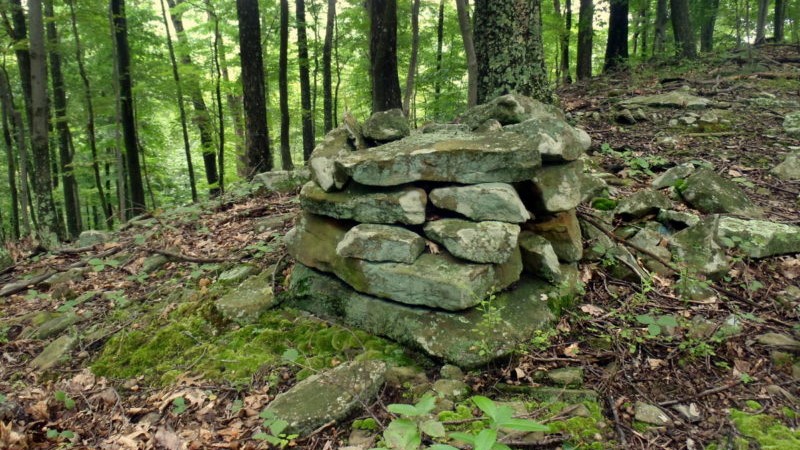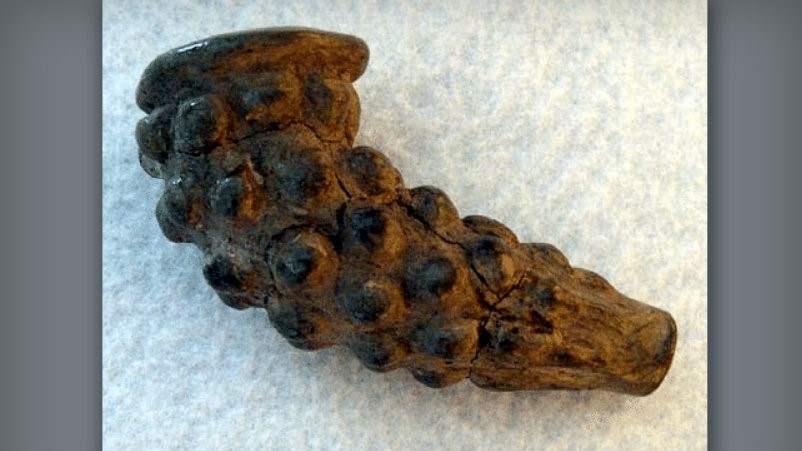by Charity Moore Norton | Aug 10, 2021 | Cultural Resources, News, Volunteerism
Since 2019, one of AllStar Ecology’s cultural resource management (CRM) staff has volunteered ocassionally as an archaeology correspondent for the West Virginia Explorer. The West Virginia Explorer is an online magazine designed to “investigate West Virginia and its natural and cultural resources.”
The collaboration started in response to an open letter by the Council for West Virginia Archaeology (CWVA), which highlighted issues with popular – but unfounded – assumptions about archaeology and prehistory. Ms. Norton partnered with WV Explorer’s editor, David Sibray, to write a number of articles with scientifically-sound evidence and professionally-qualified interpretations. In the process of writing these articles she interviewed various personnel from state and regional organizations. These included the West Virginia State Historic Preservation Office (WV SHPO), Grave Creek Mound Archaeological Complex, and the CWVA. With their help, she was able to gather information on topics such as historical rock piles, how to document a new archaeological site, and myths about mound builders and giants.
You can read a few of her articles by following the links below:
West Virginia Explorer Articles
by Charity Moore Norton | Jul 9, 2021 | Cultural Resources, News, Permitting
The law may require that your project is evaluated for impacts to archaeology, cemeteries, old architecture, historic viewsheds, etc. Often called “Section 106 review,” this process involves consultation with the State Historic Preservation Office (SHPO), who may request a Phase I archaeological survey, architectural reconnaissance survey, or for you to evaluate historic properties.
Only a professionally qualified cultural resource management (CRM) consultant can fully navigate the Section 106 process, but here are a few basics that YOU should know.
- Section 106 is part of the National Historic Preservation Act (NHPA), which regulates projects with a “federal nexus.” Such projects are defined as an “undertaking” and are triggered by permits, land, funding, jurisdiction, or any other direct involvement from a federal agency. One of the most common is a Nationwide Permit from the U.S. Army Corps of Engineers.
- When an undertaking could impact a “historic property,” a Section 106 review helps government agencies to manage or mitigate impacts in a responsible way. This consultation requirement cannot stop development or force preservation, but all of the steps must be completed according to federal and SHPO guidelines. Click here for a printable flowchart of the Section 106 process.
- Cultural resources must meet one of the National Register of Historic Places (NRHP) eligibility criteria to be considered “historic properties.” They usually must be more than 50 years old and can include archaeological sites, houses and other architecture, farmsteads, historic areas, bridges, cemeteries, rock walls, etc. If a cultural resource fails to meet one of the NRHP criteria, they must still be documented for due diligence.
- State Historic Preservation Offices (SHPOs) advise government agencies on how to comply with Section 106, make recommendations for archaeological or architectural surveys, and provide expert opinions about which cultural resources may be impacted and/or NRHP-eligible. Although a CRM consultant can make professional recommendations, only SHPO and the involved agencies make final determinations.
- Historic properties are uncommon; however, agencies often require due-diligence background research and surveys to check for undocumented cultural resources. Most areas have never had a historic survey, so boots-on-the-ground is generally the only way to clear a project area. Archaeology is particularly challenging, since most resources are invisible below the ground surface.
- Regulated impacts are limited to changes to a historic property that negatively affects its NRHP-eligibility. However, agencies often focus on physical disturbance (direct effect) and alterations to the property’s viewshed, including newly-built aboveground components and tree-clearing (indirect effect). Not all indirect effects are considered “adverse effects” and even adverse effects can be minimized or mitigated.
You can learn more about the federal review process in the ACHP’s “A Citizen’s Guide to Section 106 Review” here and more about the WV SHPO’s specific guidelines here.

by Charity Moore Norton | Apr 2, 2018 | Cultural Resources, News
The Naming of Rover’s Run and Bear Knob
At the western edge of Upshur County lies a small perennial stream called Rover’s Run. This stream derives its name from a case of mistaken identity, according to Lucullus Virgil McWhorter, an amateur archaeologist, author of a 1915 book on the history of Hacker’s Creek, and later Western pioneer who grew up nearby. McWhorter describes his grandfather and a friend’s (John Edmonds) hunting trip. As they traveled through the unbroken forest, Mr. Edmonds spied a wolf off in the distance. After taking the shot, he approached the dead animal, only to find that he had killed his favorite dog, Rover.
Like the rest of the Hackers Creek watershed, this stream runs through a deep valley surrounded by steep, narrow ridges. One of the overlooking ridgetops, which also happens to be the tallest point in the watershed, is identified on old maps as “Bear Knob.” This name comes from another hunting anecdote from the mid-1800s, also recorded by McWhorter. After a hog was taken from a farm, Isaac Reger took a rifle and hunting dogs to track down the offending bear. His dogs chased the bear into a tree on the tall knob, allowing Mr. Reger to take his revenge. The knob had formerly been known as “Potato Knob,” due to its profile’s similarity to a potato mound, and later became a popular site for Easter parties.
The Role of Archaeology and History
Although McWhorter is considered to be a reliable source, his information is based on oral tradition. This is often the case in local history, which mixes hearsay, “fish stories,” and half-remembered events that are much more colorful than the dry government records and genealogies that scholars use to research the past. While we may never know where Rover actually died, or if a hungry bear was really a defining local moment, archaeology can give us a science-based look into the everyday lives of past individuals. History can tell us Mr. Smith lived in the year eighteen-something, but archaeology can tell us that he had a habit of smoking with a horn pipe and that his wife bought her dishes from the city instead of the local general store. On a bigger scale, archaeology can answer questions about socio-economic status, farmstead layout, and other topics that don’t always make it into written records.

Phase I and II Survey Results
In November 2014, AllStar Ecology began an archaeological survey of the Bear Knob Property, which includes both Rover’s Run and Bear Knob. A total of 738 artifacts were collected, including Native American tools and pottery, a horseshoe, possible lead shot, and fragments of dishes and bottles from early European-American settlers. These artifacts belonged to 12 different archaeological sites and may span as much as ten thousand years, providing a unique look at human history within a single West Virginia valley. These resources included isolated lithics, scatters of prehistoric artifacts, historic-period debris scatters associated with old houses, and a group of interesting rock piles.


Historical Research Results
As AllStar Ecology’s Archaeologists began to study the artifacts and relate them to historical documents, the story of an early West Virginia family began to emerge. Instead of just reading about the Lawmans, Bonds, and other inhabitants of the hollow, we were holding the physical representations of their lives and actions. According to a descendant, William Lawman and his father Barnhard built a log cabin at the head of Rover’s Run in the 1860s, matching the interpretations of survey findings. Along with an older brother, William fought for the Union during the Civil War, while Barnhard and his 10-year-old son fought for the Confederacy. The latter two moved to a neighboring hollow after the war and a path between the two is visible in aerial imagery. The remains of their homes were studied and can contribute to our understanding of daily life during this difficult period in history.

The Future of the Bear Knob Property
Many of the identified cultural resources will be preserved within an aquatic resource mitigation bank to be constructed on the property, which will allow for their future access by archaeologists, perhaps as part of mitigation for another project. The Bear Knob Property survey was a unique experience for AllStar Ecology, as it uniquely shed light on the history of an entire hollow and provided an example of how cultural resource management can benefit from mitigation banking.








